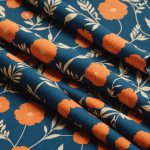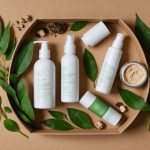Flattering Hairstyles for Women Over 50 with Fine Hair
Exploring flattering hairstyles for women over 50 with fine hair involves considering styles that enhance volume and bring out one’s best features. As you age, hair texture and volume change, necessitating the need for styles that adapt to these changes.
Choosing an age-appropriate style is crucial for preserving elegance while meeting practical needs. A layered bob is a timeless option. Its layers add dimension, making hair appear fuller and more voluminous. The strategic placement of these layers can also accentuate the face, softening lines.
Additional reading : Ultimate tips for maintaining luminous hair color between salon visits
The textured pixie cut offers an edgy, youthful appearance. This cut not only flatters but also minimizes the need for daily maintenance, thanks to its short length. As a bonus, it can be styled with a simple ruffle using a minimum of styling products.
Finally, shoulder-length waves are particularly versatile, offering a blend of sophistication and ease. When styled with loose waves, they impart a youthful flair while requiring minimal upkeep. This style can be polished with a simple blow-dry or left to air dry for a natural, relaxed look. Choosing the right haircut involves a balance of trendiness and practicality to accommodate both personal style and hair type.
Also to read : Top tips for beating chafing in extreme heat: the complete guide you need!
Specific Hairstyle Recommendations
When seeking age-appropriate styles for fine hair, tailored advice can make all the difference. Women over 50 benefit from hairstyle recommendations that not only accentuate their beauty but are also flattering cuts that elevate fine hair’s appearance. Let us delve into three recommended styles.
Layered Bob
A layered bob is celebrated for its versatility and elegance. It involves creating layers between hair sections, adding an illusion of volume and depth to fine hair. This cut suits women over 50 as it frames the face attractively, enhancing key facial features while softening others. Maintenance is straightforward; regular trims keep the silhouette fresh without excessive effort.
Textured Pixie Cut
The textured pixie cut offers an edgy, youthful vibe. Unlike traditional short cuts, this one encourages texture, creating movement even in fine strands. Stylists often employ cutting techniques that infuse volume at the crown, diminishing any limpness typical of fine hair. The simplicity in daily styling, often just a few product applications, makes this a winner.
Shoulder-Length Waves
Finally, shoulder-length waves stand out for their adaptability. By being neither too short nor too long, the cut provides ample room for creating waves that add body. Styling involves either a blow-dry for polished waves or air drying them for a carefree appearance, both maintaining elegance without sacrificing ease.
Styling Tips for Fine Hair
Styling fine hair can be an art, particularly for women over 50 seeking to boost volume and adapt to changing textures. Utilizing the right products plays a crucial role in achieving the desired look. Opt for volumizing mousses or sprays that specifically target fine hair. These can add body at the roots without weighing hair down.
Techniques to create the illusion of thicker hair include using a round brush while blow-drying to add lift at the crown. Another trick is to lightly backcomb at the roots and set with a light-hold hairspray, enhancing the volume effect further.
Here’s a highlight of dos and don’ts:
- Do: Use a lightweight conditioner only on the ends to prevent limpness.
- Don’t: Avoid oils or heavy serums that can flatten fine strands.
- Do: Employ a side part, which can instantly add fullness.
- Don’t: Skip heat protectants; they safeguard hair’s integrity during styling.
For fine hair, delicate handling during styling ensures the preservation of its health and volume. Exploring these methods can lead to satisfying daily hairstyles that combine elegance with practicality.
Maintaining Healthy Fine Hair
Maintaining healthy fine hair requires a carefully curated hair care routine tailored to the uniqueness of finer strands. Clarifying shampoos, without harsh sulfates, gently cleanse without stripping essential oils. These shampoos ensure hair stays fresh and luscious without weakening its structure.
Conditioning plays a significant role and should focus on the ends to avoid weighing hair down. Opt for lightweight, hydrating conditioners that nourish without leaving buildup. Incorporating a leave-in conditioner can offer added protection and shine, making hair resilient against environmental factors.
When it comes to a care routine, consistency is key. Begin with a weekly deep-conditioning treatment to strengthen hair. Follow this with gentle detangling using a wide-tooth comb to prevent breakage. Regular trims every six to eight weeks will help eliminate split ends and maintain a healthy appearance.
Avoiding certain practices is crucial. Steer clear of high-heat styling tools, which can exacerbate damage. Instead, focus on air-drying whenever possible. Using a thermal protector is essential when heat cannot be avoided. Lastly, refrain from overusing styling products, which may create undesirable residue and further weigh hair down, detracting from its natural beauty.
Managing Frizz in Curly Hair during Rainy Weather in the UK
Tackling frizz in curly hair, especially during the UK’s rainy weather, can be challenging. Curly hair is more prone to frizz due to its texture, which readily absorbs moisture from the environment. Frizz control becomes essential to maintain smooth and defined hairstyles in such conditions.
One of the key factors in managing frizz is using the right curl-enhancing products. Humid weather conditions require products that add moisture and seal the hair cuticle to prevent excess moisture absorption. Silicone-based serums, for example, create a barrier against humidity, locking in the hair’s natural moisture.
Styling practices also play a crucial role. Drying hair with a microfiber towel prevents cuticle disruption, a common cause of frizz. Moreover, applying a leave-in conditioner, followed by a curl-defining cream, helps maintain curls’ shape and vibrancy. It’s advisable to let hair air dry whenever possible, or, if time-constrained, use a diffuser with low heat to minimize damage.
For rainy days, protective styles like braids or buns can effectively reduce exposure to moisture and humidity. Embracing these curly hair tips ensures your curls stay bouncy and frizz-free, despite the often unpredictable British weather.
Product Recommendations for Frizz Control
When confronting frizz, especially in curly hair, selecting the right frizz control products is essential to avoid hair distress. In the UK’s rainy climate, finding effective curly hair care solutions is crucial. High-humidity conditions necessitate robust product formulations that seal moisture and ward off frizz.
Top Hair Serums
Silicone-based serums are a front-runner. They envelop hair with a protective barrier, preserving moisture inside while resisting external humidity. The smooth, shiny finish they impart not only looks sleek but also shields fragile hair cuticles against the dampness.
Best Curl Creams
Curl creams are instrumental in managing definition. These creams offer moisture, making curls pliable and manageable throughout the day. Their formulation prevents curl collapse in humid conditions while promoting bounce, ensuring each curl remains well-defined and full of life.
Effective Anti-Humidity Sprays
Among anti-humidity sprays, those providing a light, non-greasy shield emerge as highly effective. They lock in your style without weighing hair down, preserving natural texture. A quick spritz post-styling can dramatically prolong your hairstyle’s integrity, even when rain threatens to dampen your day. Emphasizing the use of these products can empower curly haired individuals to maintain control and confidence, irrespective of the British weather.
Best Curling Techniques for Rainy Days
Crafting curls that hold up against rainy weather demands specific curling techniques designed to enhance durability and resistance to humidity. When rain looms, achieving well-defined curls starts with preparation. Begin by applying a lightweight styling gel or mousse to damp hair, focusing on products that promise moisture resistance.
Utilizing a diffuser attachment on your hairdryer can help set curls without disrupting their natural pattern. Dry your hair on a low heat setting, ensuring each curl forms properly. For long-lasting curls, consider wrapping small sections around a curling iron. This method boosts definition, crucial for enduring rain’s effects.
Once styled, a light mist of anti-humidity spray can create a shield against damp air, preserving curls’ bounce and form. When you’re short on time, resort to overnight setting techniques like braiding or using soft rollers. These methods can simplify your morning routine, delivering resilient curls with minimal morning effort.
Lastly, keep your curls intact by wearing a rain-friendly style, such as a loose bun. This not only protects against the dampness but also adds an element of chic to your look. Embracing these strategies can ensure your curls remain vibrant and full, no matter the weather.











